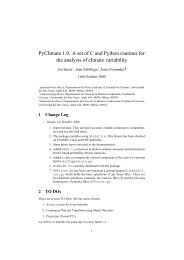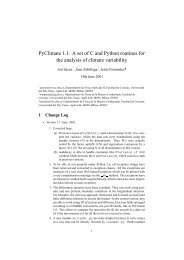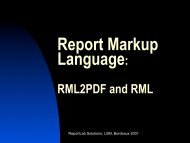You also want an ePaper? Increase the reach of your titles
YUMPU automatically turns print PDFs into web optimized ePapers that Google loves.
a = [66.6, 333, 333, 1, 1234.5]<br />
>>> print a.count(333), a.count(66.6), a.count(’x’)<br />
2 1 0<br />
>>> a.insert(2, -1)<br />
>>> a.append(333)<br />
>>> a<br />
[66.6, 333, -1, 333, 1, 1234.5, 333]<br />
>>> a.index(333)<br />
1<br />
>>> a.remove(333)<br />
>>> a<br />
[66.6, -1, 333, 1, 1234.5, 333]<br />
>>> a.reverse()<br />
>>> a<br />
[333, 1234.5, 1, 333, -1, 66.6]<br />
>>> a.sort()<br />
>>> a<br />
[-1, 1, 66.6, 333, 333, 1234.5]<br />
5.1.1 Folosirea listelor drept stive<br />
Obiectele de tip listă pot fi folosite foarte uşor pentru a simula comportamentul unei stive. Pentru a adăuga un<br />
element pe stivă (PUSH), puteţi folosi append(). Pentru a scoate un element din stivă (POP), folosiţi pop()<br />
fără a specifica un index. Iată un exemplu:<br />
>>> stack = [3, 4, 5]<br />
>>> stack.append(6)<br />
>>> stack.append(7)<br />
>>> stack<br />
[3, 4, 5, 6, 7]<br />
>>> stack.pop()<br />
7<br />
>>> stack<br />
[3, 4, 5, 6]<br />
>>> stack.pop()<br />
6<br />
>>> stack.pop()<br />
5<br />
>>> stack<br />
[3, 4]<br />
5.1.2 Folosirea listelor drept cozi<br />
Puteţi folosi listele foarte convenabil, pentru a implementa cozi. Spre deosebire de stive unde primul element<br />
adăugat este ultimul scos, la cozi primul element adăugat este primul scos. Pentru a adăuga un element folosiţi<br />
append(), iar pentru a extrage un element folosiţi pop(0):<br />
28 Capitolul 5. Structuri de date









